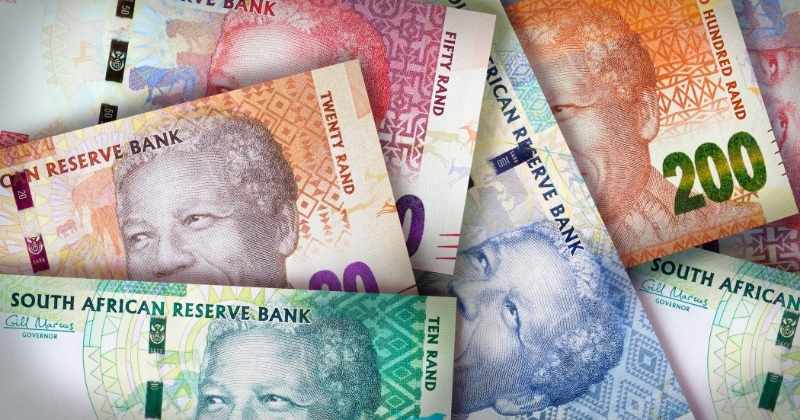
The South African Rand (ZAR) is the official currency of South Africa and is also accepted in the Common Monetary Area, which includes Lesotho, Namibia, and Eswatini, although each of these countries has its own national currency. The symbol for the Rand is R, and it is subdivided into 100 cents. The name “Rand” originates from Witwatersrand, meaning “ridge of white waters,” a reference to the region where a significant portion of South Africa’s gold reserves were discovered and where Johannesburg was founded.
Key Takeaways
- History: The Rand was introduced in 1961, replacing the South African pound. Its value has fluctuated significantly due to various political, economic, and social factors, including the impact of apartheid and economic instability.
- Banknotes: South African banknotes have undergone several redesigns over the years. Early designs featured symbols such as the Big Five wildlife, while later editions included images of Nelson Mandela. These banknotes have also been updated with enhanced security features to combat counterfeiting.
- Coins: The coinage has evolved, introducing higher denominations while phasing out lower-value coins due to inflation. The most recent series, launched in 2023, showcases national symbols, including the Cape Honey Bee and the Springbok.
About Arcadia Finance
Simplify your loan process with Arcadia Finance. Choose from 19 trusted lenders, all compliant with South Africa’s National Credit Regulator, and pay zero application fees. Tailored financial options delivered through an easy, reliable process.
The Past of the South African Rand
In 1961, the South African Rand (ZAR) was first introduced when South Africa became a republic, taking the place of the South African pound, which had formerly been the national currency since the establishment of the Union of South Africa as a British Dominion in 1910.
In its early years, the Rand appeared promising, with an exchange rate of 1.40 US dollars to 1 Rand during its first decade. However, its value declined significantly in subsequent years, mainly due to inflation and growing international condemnation of South Africa’s apartheid policies, which enforced racial segregation.
By 1985, the Rand had weakened to 2 Rands per 1 US dollar, prompting South Africa to temporarily suspend foreign exchange trading in an attempt to stabilise the currency. The political uncertainty associated with the dismantling of apartheid and the shift to majority rule further diminished the Rand’s value.
In 1992, the exchange rate fell to 3 Rands per 1 US dollar, and by 1999, it had doubled to over 6 ZAR per 1 USD. The Rand continued to decline, reaching nearly 14 ZAR per 1 USD by 2001. However, between 2001 and 2006, it regained approximately half its value against the US dollar, improving to around 6 ZAR per 1 USD.
In 2012, a downturn in the vital mining sector triggered another decline in the Rand’s value, which reached just over 15 ZAR per 1 USD by 2014. This downturn was worsened by South Africa’s significant trade deficit and a slowdown in China’s economy, one of its key trading partners.
The Rand hit its lowest point in 2016, trading just below 18 ZAR per 1 USD. In 2017, Moody’s credit rating agency rated South Africa’s credit status as only marginally above junk status.
By 2020, the exchange rate hovered around 15 ZAR per 1 USD. Ongoing issues such as poverty, crime, political instability, and unemployment continue to impact the country’s economic landscape and the strength of its currency.
Amazon’s expansion into South Africa mirrors the introduction of the rand in 1961, both representing pivotal shifts in the economy. Just as the rand brought a new era in South African finance, Amazon’s presence is shaping the modern economic landscape.

South African Coins and Banknotes
The South African Reserve Bank issues a variety of coins to facilitate everyday transactions within the country. These coins are available in denominations of 1 cent, 2 cents, 5 cents, 10 cents, 20 cents, and 50 cents, as well as 1 rand, 2 rands, and 5 rands, catering to various small-scale monetary needs.
In addition to coins, banknotes are issued in five denominations: 10 rand, 20 rand, 50 rand, 100 rand, and 200 rand, covering larger financial transactions.
In 2012, South Africa introduced a new series of banknotes featuring the image of Nelson Mandela, the former President and renowned anti-apartheid leader. This redesign marked a significant change, reflecting the nation’s respect for Mandela’s legacy. In 2018, a commemorative series of banknotes was released in all denominations, showcasing updated portraits of Mandela to honour his lasting impact on the country.
Coins
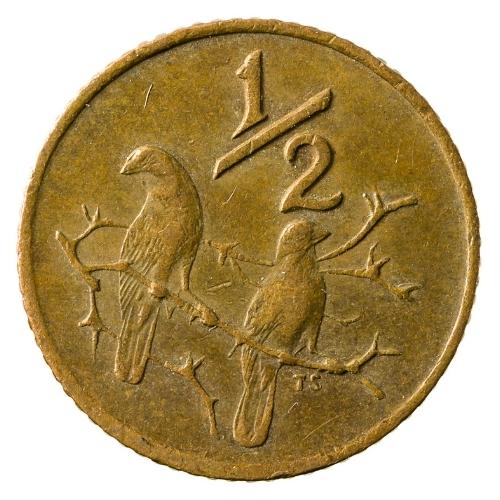
In 1961, South Africa introduced coins in denominations of ½, 1, 2½, 5, 10, 20, and 50 cents. Four years later, in 1965, the 2-cent coin replaced the 2½-cent coin. The production of the ½-cent coin ceased for general use in 1973. The 1-rand coin was introduced for circulation in 1967, followed by the 2-rand coin in 1989 and the 5-rand coin in 1994. Due to inflation, the production of 1-cent and 2-cent coins was discontinued in 2002, with the 5-cent coin following in 2012. Despite this, these coins remain legal tender, although prices in shops are typically rounded to the nearest 10 cents.
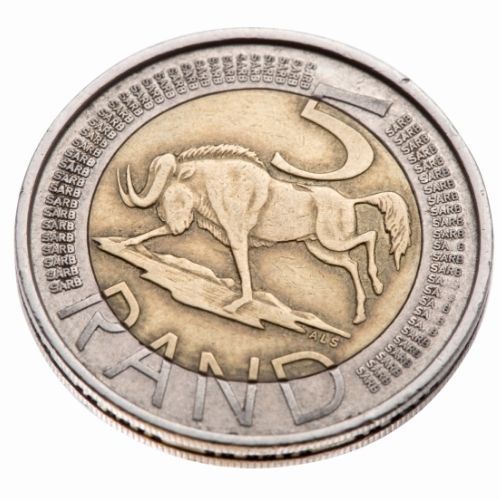
To combat counterfeiting, a redesigned 5-rand coin was released in August 2004. This updated coin features several security enhancements, including a bimetallic design similar to the €1 and €2 coins, the Thai ฿10 coin, the pre-2018 Philippine ₱10 coin, the British £2 coin, and the Canadian $2 coin. It also has a uniquely serrated groove along its edge and incorporates microlettering for additional security.
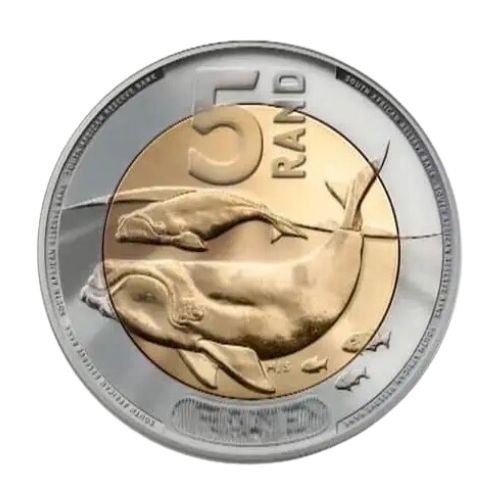
On 3 May 2023, the South African Reserve Bank announced the launch of a new coin series, maintaining the same denominations as the previous set. The designs feature the Cape Honey Bee on the 10-cent coin, the Bitter Aloe on the 20-cent coin, the Knysna Turaco on the 50-cent coin, the Springbok on the R1 coin, the King Protea on the R2 coin, and the Southern Right Whale on the R5 coin.
South Africa’s monetary policy, particularly the adjustment of the repo rate, plays a vital role in the stability of the rand. Over the decades, as the country faced economic challenges, the repo rate has been a key tool in controlling inflation and maintaining the rand’s value.

Banknotes
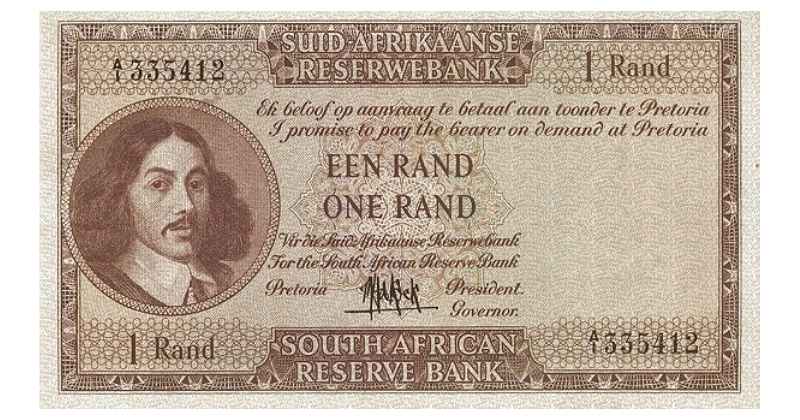
The rand banknotes were first introduced in 1961, issued in denominations of 1, 2, 10, and 20 rand. To facilitate the transition from the previous currency, the designs and colours closely resembled those of the pound notes they replaced. Initially, the notes featured an image thought to be Jan van Riebeeck, the first Dutch East India Company (VOC) administrator in Cape Town. However, it was later discovered that the portrait was actually of Bartholomew Vermuyden, who had been mistakenly identified as Van Riebeeck.

A second series of notes was issued in 1966, departing from the old pound notes’ designs. This set included 1, 5, and 10 rand denominations, each note predominantly displayed in one colour. A smaller 1 rand note appeared in 1973, followed by a 2 rand note in 1974, while the 20 rand note from the original series was discontinued. Each denomination was produced in both English and Afrikaans versions, a practice that continued with this series.

In 1978, a new series was introduced, consisting of 2, 5, 10, and 20 rand notes, with a 50 rand note added in 1984. This time, each note featured only one language version: Afrikaans appeared first on the 2, 10, and 50 rand notes, while English was the primary language on the 5 and 20 rand notes. The 1 rand note was replaced by a coin.

During the 1990s, banknotes were redesigned to feature images of the Big Five wildlife species. New 10, 20, and 50 rand notes were introduced between 1992 and 1993, maintaining the previous series’ colour scheme. The 2 and 5 rand denominations were replaced by coins, as the lower-value notes suffered excessive wear and tear in circulation. In 1994, 100 and 200 rand notes were added.
The fluctuating history of the South African Rand reflects broader economic trends that impact the entire continent. To understand the effects of these trends on some of the most vulnerable economies, read our exploration of the Poorest Countries in Africa.
The 2005 series retained the main design but introduced additional security features, including colour-shifting ink on the 50 rand and higher denominations, along with the EURion constellation. All denominations were printed in English on the front, while two of South Africa’s official languages appeared on the reverse, encompassing all 11 official languages of the country.
In 2010, the Reserve Bank withdrew all 1994 series 200 rand notes due to a surge in high-quality counterfeits.
In 2011, a batch of defective 100 rand notes was issued that lacked the UV-visible fluorescent printing. Production of this denomination was subsequently moved to Crane Currency’s Swedish division, Tumba Bruk, which produced 80 million 100 rand notes. The Reserve Bank later shredded 3.6 million of these notes because they shared serial numbers with a batch printed by the South African Bank Note Company. Additionally, the notes from Sweden were incorrectly coloured and measured 1mm shorter than specified.

On 11 February 2012, President Jacob Zuma announced a new series of banknotes featuring Nelson Mandela’s image. These notes, in the 10, 20, 50, 100, and 200 rand denominations, were released into circulation on 6 November 2012. In 2013, this series was updated with the EURion constellation added to all five denominations.
To mark the 100th anniversary of Nelson Mandela’s birth, a commemorative series of banknotes was issued on 18 July 2018. This set includes the same denominations as before; while Mandela’s face remains on the front, the reverse side features scenes representing his legacy rather than the Big Five animals. These include the rolling hills of the Eastern Cape with Mandela’s birthplace, Mvezo (10 rand); his Soweto home, symbolising his political journey (20 rand); the capture site near Howick with a commemorative monument (50 rand); Robben Island, with a pile of quarried limestone representing his imprisonment (100 rand); and the statue of Mandela at the Union Buildings, celebrating his 1994 inauguration (200 rand).

On 3 May 2023, the Reserve Bank announced a new banknote series that retains Mandela’s image on the front while depicting the Big Five animals in family groupings on the reverse. The denominations remain the same: 10, 20, 50, 100, and 200 rand.
The value of the Rand has been on quite a journey, shaped by decades of economic changes. If you want to understand why the currency moves, start with the basics in What is Inflation. It will help you make sense of South Africa’s financial history.
Conclusion
The history of the South African Rand mirrors the country’s economic and political journey, marked by periods of stability and upheaval. Introduced in 1961 to replace the pound, the rand has undergone significant changes influenced by internal factors, such as the transition from apartheid, and global economic trends, including trade deficits and shifts in key industries like mining.
The evolution of both coins and banknotes reflects efforts to modernise the currency, incorporate national symbols, and enhance security against counterfeiting. Today, the rand continues to represent South Africa’s ongoing challenges and resilience within the global market.
Frequently Asked Questions
The South African Rand was introduced in 1961 when the country became a republic. It replaced the South African pound, which had been in use since the establishment of the Union of South Africa as a British Dominion in 1910.
The rand’s decline has been influenced by various factors, including high inflation, international opposition to apartheid, political uncertainty during the transition to majority rule, trade deficits, fluctuations in key industries like mining, and changes in global markets, particularly the economic slowdown in China.
The current denominations of South African rand banknotes are 10, 20, 50, 100, and 200 rand. The latest series, released in 2023, features Nelson Mandela’s image on the front and family depictions of the Big Five animals on the reverse.
Lower-value coins such as the 1-cent and 2-cent pieces were discontinued due to inflation, which made their production costs higher than their face value. Currently, coins in circulation include 10, 20, and 50 cents, as well as 1, 2, and 5 rand coins.
South African banknotes have undergone several redesigns, starting with designs similar to the old pound notes. In the 1990s, they featured the Big Five animals, and in 2012, a new series was issued with Nelson Mandela’s portrait. The latest updates in 2023 include Mandela’s image on the front and new family depictions of the Big Five on the reverse, along with enhanced security features.
Fast, uncomplicated, and trustworthy loan comparisons
At Arcadia Finance, you can compare loan offers from multiple lenders with no obligation and free of charge. Get a clear overview of your options and choose the best deal for you.
Fill out our form today to easily compare interest rates from 19 banks and find the right loan for you.


